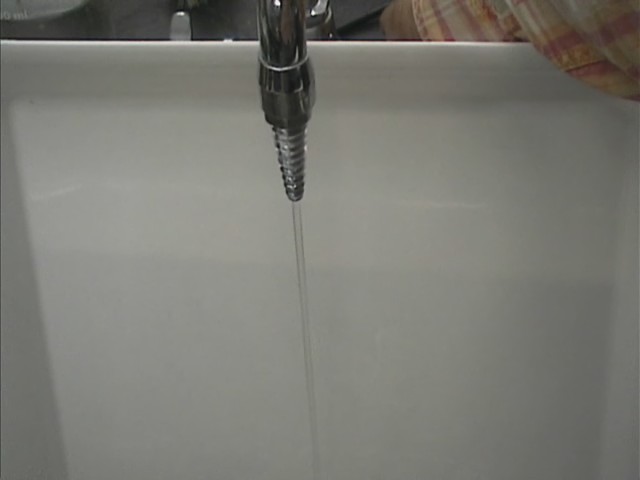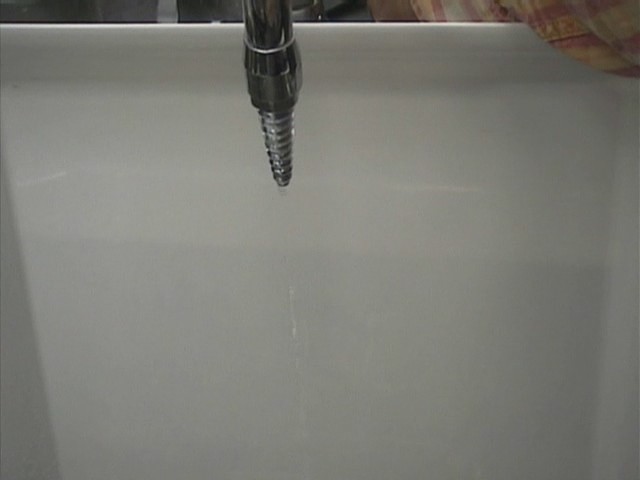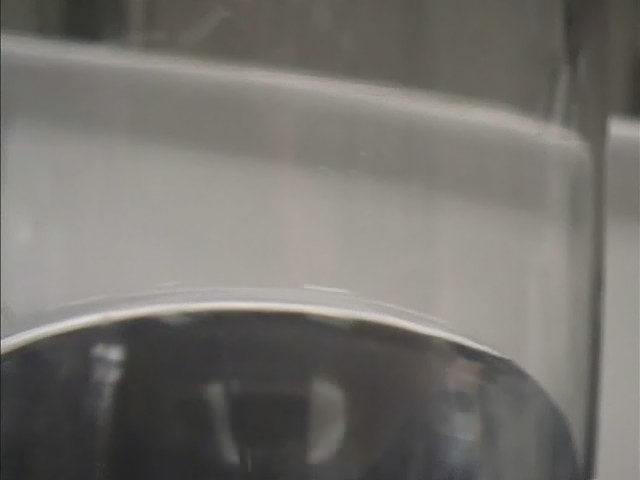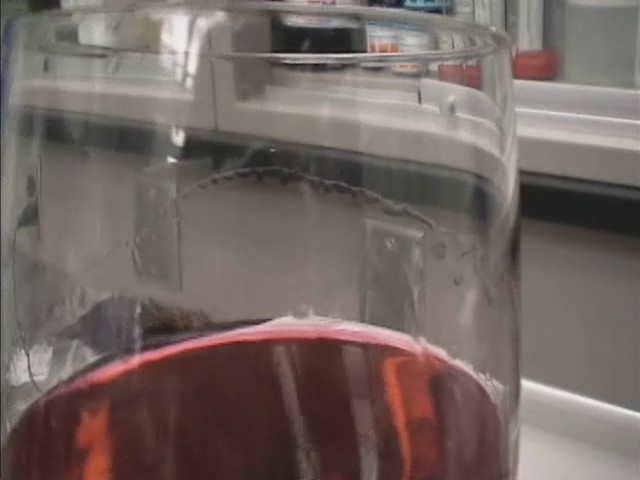9) Interfacial stability
(i) Breaking of jet...
 |  |
Upon opening a faucet, we can observe that the water stream breaks up into droplets in order to lower its surface energy. To understand better the benefits of a lower surface, we may mentally break up a cylinder of radius R and length L into n droplets of radius r. Conservation of volume dictates that
πR2L = 4/3 π r3 n
Let us examine the ratio of the final surface area Sn of the drops to the initial surface area So of the cylinder. After eliminating n with the help of above equation, we obtain
Sn/So = n.4πR2/ 2πRL = 3R/2L
It is clear that the surface area of the drops is less than that of the original cylinder as soon as r > 3/2 R.
(ii) Wine tears

|
 |
Click here for the videos: No tears with water, Tears with wine
We can observe the accumulation of a ring or film of clear liquid some distance up from the surface of the wine contained in a wine glass. From this ring, "tears", or liquid drops of the accumulated liquid will flow back into the wine, forming arches and leaving streaks. If we try the same thing with glass of water, this effect will not be observed. Prof. Hosoi and Prof. Bush at MIT have studied the phenomenon of wine tears in detail. Click here to find out more....
Back to index ||Introduction to surface tension ||Definition of surface tension||Interfacial tension ||Minimal surfaces ||Soap bubbles, Surfactants and Detergents
Wettability||Role of roughness ||Capillarity and gravity||Dynamical effects and instability||Special interfaces ||Current research in wettability
Back to NIRT Home||On our current research ||More on Wetting||Contact Angle Measurement||Atomic Force Microscopy ||My personal homepage